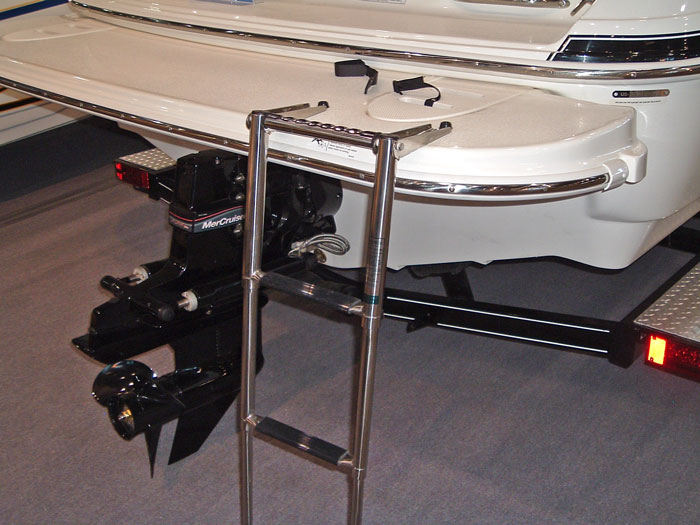Licensing Propeller Safety Technologies That Are Part of Industry Standards / Regulations: Similar Case Heads to Court
A case currently before U.S. District Court in Seattle may have bearing on the licensing of propeller guards and other propeller safety technologies.
In the past, some have said that swim ladder switches such at Keith Jackson / MariTech’s Prop Stopper could not be included in any USCG propeller safety regulation because they are a proprietary, patented design.
We have previously explained that when a company agrees to allow its patented products to be included in an industry standard, it must license others in the the industry so they too can meet the new industry standard, AND that license must be at a reasonable rate. Legal types refer to these reasonable patent license terms as RAND (Reasonable AND Non Discriminatory) or as FRAND (Fair, Reasonable AND Non Discriminatory).
The Federal Government retains the right to step in and reset those terms if the licensor tries to gouge the other participants.
We have also relatively recently written of the Australian Environmental Safety Propeller and its effort to sign a licensing agreement with a manufacturer. As part of that discussion we mentioned how that discussion might proceed. We noted that mechanical devices often license somewhere in the range of 4 to 7 percent of sales. Another method is to request something in the range of 25 percent of the profits.
In the case of the Australian Safety Propeller, the propeller guys would probably begin by asking for something in the range of 4 to 7 percent of the sales of a marine drive PLUS the Propeller (4 to 7 percent of a lot of money) while the manufacturer would probably be thinking of something in the range of 4 to 7 percent of the propeller only. After they talk it out quite a while, they would probably settle somewhere in the middle.
Yamaha recently released a propeller guard in Europe they claim meets all their expectations. If such a guard were to be accepted as an industry standard, it would face licensing issues similar to those faced by the swim ladder switch and the Safety Propeller.
Reference: Pivotal Patent Case Heads to Court: Microsoft, Motorola Mobility Face Off Over Paying for Technology That is Part of an Industry Standard. Wall Street Journal. November 12, 2012. Page. B4.
A very interesting case is coming to court in Seattle the week of November 12, 2012 that addresses both the points raised above:
- What is a reasonable rate / royalty percentage?
- Should that rate be paid on the value of the technology itself (like on the Safety Propeller) OR should that royalty be paid on the value of the device that uses the technology (marine drive plus propeller)?
Microsoft and Motorola are arguing over how much a patent holder can charge for a technology that is part of an industry standard. The case involves a Motorola (now part of Google) streaming technology. U.S. District Court Judge James Robart will decide what a RAND in this situation would be. A jury would then decide if Motorola breached their implied contract (exceeded the RAND for a technology included in an industry standard).
Those studying the case anticipate Judge Robart may set a “percentage, a formula, or a set of factors” to determine a reasonable royalty. They also expect the Judge to weigh in on if that royalty / percentage should be applied solely to the value of the technology, or to the value of the product that uses the technology.
ECommerce Times indicates the gap between the two players. Motorola wants Microsoft to pay 2.25 percent of the price of each product including the technologies while Microsoft only wants to pay a nickle per product using the technologies. Apple is still on the sidelines in this case (they have similarly accused Motorola of gouging them on the same technologies) saying a dollar per product or less would be a reasonable fee for Apple to pay.
Ars Tecnica says Microsoft has proposed paying Motorola $1.21 million per year, but Motorola wants $4 billion per year.
Its obvious the two sides are a long ways apart. It will be interesting to see what happens.
We will enter a guess at what might happen. The Judge might try to combine both methods. A modest royalty percentage on the technology itself PLUS a much smaller royalty to be paid on the product employing the technology. (for example 2 percent on the technology itself PLUS .2 percent on the value of the product using the technology).
